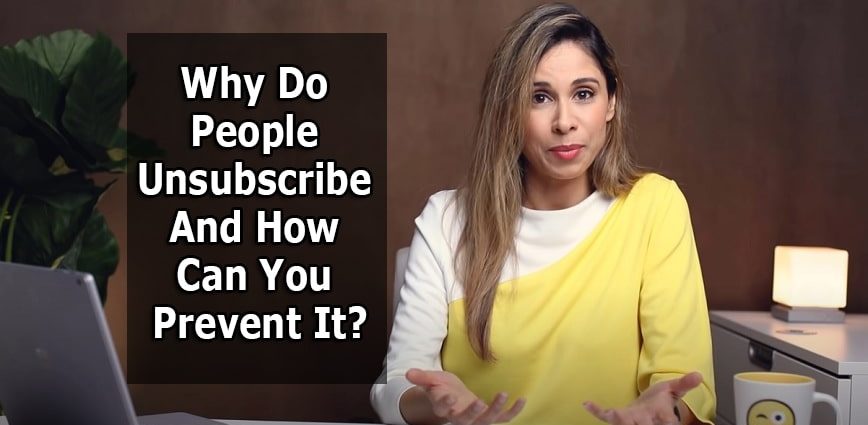If you search “unsubscribe” on Twitter, you’ll see that it’s a popular subject these days. Every week, more material and emails are published, and we are all overwhelmed by the torrent of information that arrives in our inboxes.
And many, like me, are unsubscribing. Last week, I looked through my newsletter subscriptions and unsubscribed from half of them. I didn’t have space for all of these emails, so it was time to reclaim my peace of mind.
I looked through all of them, paying close attention to what I discarded. It was obvious:
- Companies’ marketing emails
- Curated newsletters with a link index
These two sorts of newsletters were the first to go, and I preserved many of the ones written by a single individual. I began to consider what motivated me to unsubscribe from some and keep others.
Curated newsletters act as intermediaries
If there is one thing missing from our world, it is most surely not content. We have a lot of it! The more material we have, the more difficult it is for most people to find the excellent stuff. And here is where content curators come in to assist filter material based on their judgement, with readers trusting their curation due to their trustworthiness.
Newsletter curators are tremendously useful in keeping readers focused on the greatest information. A well-chosen curation may save readers a lot of time. However, when I zoomed out to examine the job of a newsletter curator. I’m concerned that it may be easily replaced by another human or even AI.
Curators are simply intermediaries. And when the experience improves, the intermediaries are always the first to depart. Then a thought occurs to me: “How can curated newsletters remain relevant?”
How well-known curators do things
I continue to subscribe to a few newsletters. And they have a similar concept that keeps me interested.
Let me provide two instances.
BrainPint
Janel is the founder of BrainPint, a weekly email for the inquisitive. I like it since the newsletter is simple and to the point. What I like about her is how personable she is. She informs her subscribers on her activities at the beginning of each email, including a recent burnout and the debut of her new product.
She has also established a real brand on Twitter, and I regularly read her tweets. I opted to save her newsletter since I had a sense I knew her. She has been allowing me to glimpse inside her life. The personal connection is what keeps me coming back.
Monday musings
Then I went to another weekly email created by David Perell, which I read every week. Monday Musings is the name of the newsletter. He presents a variety of stories he discovers online throughout the week in this weekly email.
In addition, he uses the opportunity to keep readers up to speed on his newest work and how his projects are progressing. He even has “Photo of the Week” and trip images. He is discussing his personal life, yet at a level where I don’t feel embarrassed.
When I consider these two curated newsletters overall, I am able to see why I continue to read them. Nor the links, not the substance is what keeps me coming back. It is the individual’s words that I appreciate reading the most. Because of this, I have greater faith in their abilities to put together fantastic material, and I also have a better understanding of their personal life.
Having a voice that is recognizably yours
My relationship to the author is one of the things I cherish the most. I am curious about their life, how they think, and the things that they are gaining knowledge about. The curation is nothing more than a snapshot of their thoughts at that particular time of the week. A superpower is bestowed to me by virtue of my ability to access and read other people’s thoughts.
I’m forming connections with the writers even though we haven’t had a real discussion back and forth. When you want to inject some personality into your curated email but aren’t sure what to write about, it might be challenging to figure out what to write about. The following is a list of examples of subject topics that you might discuss:
- What exactly are you, the author, working on at the moment?
- What is one important thing you’ve picked up in the last two weeks?
- What aspects of your typical week make you the most excited?
- How do you manage to maintain your motivation levels high?
A unique take on the traditional corporate newsletter
Now I see a question forming in your mind: What if I’m not generating material as a person, but rather as a worker for a business? Because of this, creating personality is going to be quite challenging. The individual who writes the newsletter may, at any moment, be switched out for someone else.
However, I am of the strong belief that people will follow other individuals. People are aware that there is an individual who is responsible for curating this newsletter. For this reason, I would still recommend looking into it since doing so makes the reading experience seem more genuine and intimate.
Time for an attitude adjustment. Let’s make one of the members of your team the author of the newsletter rather than thinking of her as the curator of the newsletter. She has the ability of infusing her personality into the newsletter in order to make it vibrant.
If you are this individual, I have some suggestions for things you may include in each newsletter:
- What challenges are you facing in your life or in your career right now?
- Where does the team’s attention now lie?
- What is one new thing that you have recently learned?
Make use of openness and honesty in order to construct a genuine story
You may also take advantage of this strategy if you are moved to do so by the ethos of #BuildingInPublic, which is a popular movement for sharing information in an open and honest manner:
- What is one important thing that the team discovered during that week that we may pass on to the readers?
- What is a single error that was committed by a member of the team, and how did they bounce back from it?
When you include tales from behind the scenes in your curated email, you immediately make it more interesting for all of your readers. With a tone like this, I have no doubt that your audience will have a sense of connection and remain engaged.



